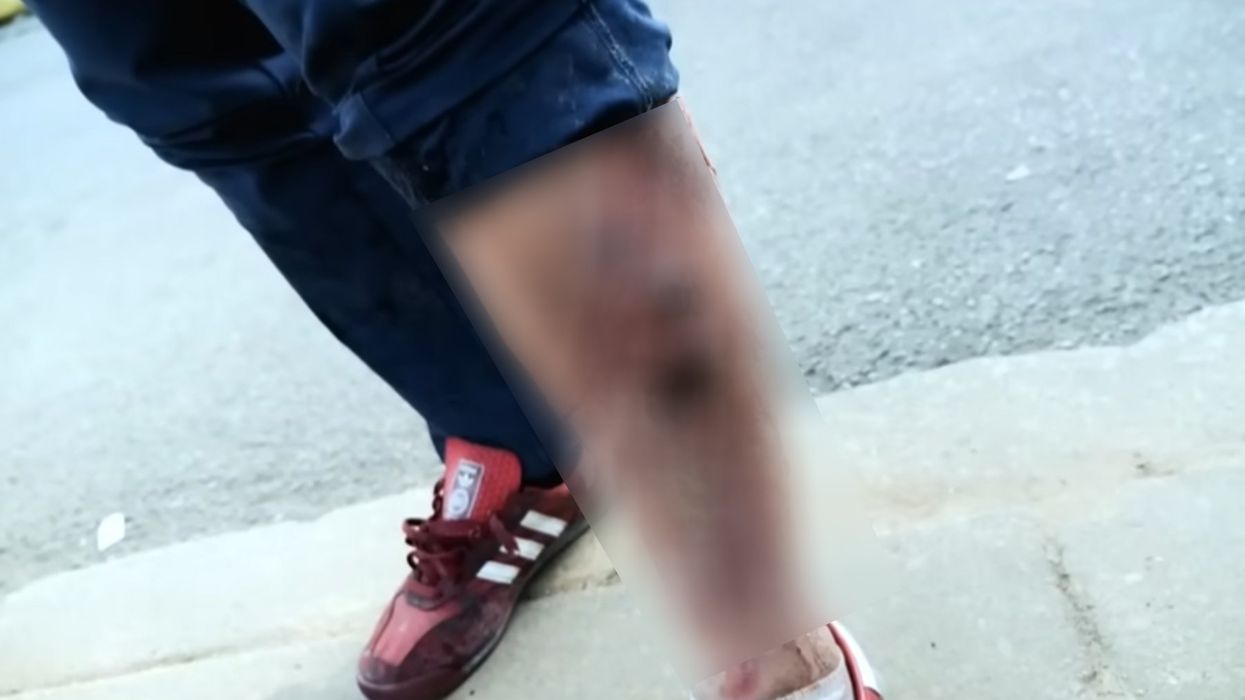
Image source: YouTube, Sky News - Screenshot (Blurred on account of gore)

Drug addicts are reportedly experimenting with an especially destructive drug: the veterinary tranquilizer xylazine.
Xylazine, often called "tranq" or the "zombie drug," has profoundly devastating effects on human beings. Users who do not immediately die by overdose frequently see their skin rot, turn black, and slough off or their injection wounds become infected and compromise entire limbs.
This danger is compounded by the drug's increasing popularity in big American cities such as San Francisco, New York, and Philadelphia.
Los Angeles, another hard-hit city, has witnessed the animal tranquilizer spread into the local street drug supply, prompting the LA County Sheriff's Department to begin actively testing confiscated drugs for traces of xylazine.
The zombie drug, usually purchased online from Chinese suppliers for $6-$20 per kilogram, is neither a controlled substance nor a new drug. It has been long marketed as a veterinary drug and used as a sedative.
According to a 2014 study published in the journal Forensic Science International, "In humans, it could cause central nervous system depression, respiratory depression, bradycardia, hypotension, and even death. There have been publications of 43 cases of xylazine intoxication in humans, in which 21 (49%) were non-fatal scenarios and 22 (51%) resulted in fatalities."
TheBlaze previously reported on a warning provided by the U.S. Food and Drug Administration, which said, "Repeated exposure to xylazine, by injection, has been associated with severe, necrotic skin ulcerations that are distinctly different from other soft-tissue infections (e.g., cellulitis, abscesses) often associated with injection drug use. These ulcerations may develop in areas of the body away from the site of injection."
The drug is reportedly used frequently as an adulterant in recreational drugs — to enhance or mimic the effects of other illicit drugs, such as heroin or cocaine.
While dangerous on its own, used in combination with other drugs, xylazine can prove especially fatal.
For instance, a 2021 American study detected the drug in 42 Connecticut fatal overdoses from March to August 2019.
KTLA reported that the recent rash of xylazine use has seen some users horribly disfigured. Some have been found covered in sores, requiring amputation. Others have had their skin fall off and inner workings exposed.
Tracey McCann, a user, told the New York Times earlier this year that the needle bruises she had from fentanyl were hardening and turning crusty. "I’d wake up in the morning crying because my arms were dying," said McCann.
Brooke Peder, a 38-year-old user in the city, lost her leg as the result of a zombie drug wound that became infected and ate into the bone. She bore her arm for the Times, revealing "patches of blackened tissue, exposed white tendons and pus, the sheared flesh was hot and red."
"The tranq dope literally eats your flesh," said Peder. "It's self-destruction at its finest."
"We had a woman come in and her sister had passed away from a fentanyl overdose," addiction expert Cary Quashen told KTLA. "But not only was it a fentanyl overdose (but) her skin was starting to rot, the muscles on her leg and her arm. So that’s a sure sign of xylazine."
DEA special agent Bill Bodner told KTLA, "It's really gruesomely disfiguring people. ... It’s much more likely to stop someone from breathing and the things that come along with xylazine, it’s a vasoconstrictor. So when you’re injecting it, it’s actually reducing the blood circulation."
The DEA released an intelligence report on the drug in October, detailing instances of exhibits involving the drug in the agency's laboratory system between 2020 and 2021. The report noted a 61% increase in the Northeast U.S. census region, a 193% increase in the South, a 7% increase in the Midwest, and a 112% increase in the West.
As xylazine-positive overdoses in the aforementioned U.S. census regions, the Northeast has seen a 103% increase; the South, a 1,127% increase; the Midwest, a 516% increase; and the West, a 750% increase.
This was not previously a priority, as the drug is not illegal.
Beginning in April, the LACSO's pilot program has had crime lab analysts noting preliminary signs of the tranquilizer when testing confiscated drugs.
"In the greater Los Angeles area, we are seeing xylazine as an additive within fake fentanyl pills," DEA Los Angeles Field Division spokeswoman Nicole Nishida told the Los Angeles Times. "While the numbers are relatively low in our community compared to elsewhere in the United States, the presence of xylazine is now becoming more frequent and the trend is concerning."
The Times indicated that federal data shows that roughly 23% of fentanyl powder and 7% of fentanyl pills seized in 2022 contained the tranquilizer.
If they determine by month's end that the number of xylazine positives is high, they will figure out standards for conducting additional confirmatory tests.
"This is going to be very unique for us, because I’m asking them to track a non-controlled substance," Capt. Ernest Bille, who oversees the department’s Scientific Services Bureau, told the Los Angeles Times.
Like Blaze News? Bypass the censors, sign up for our newsletters, and get stories like this direct to your inbox. Sign up here!